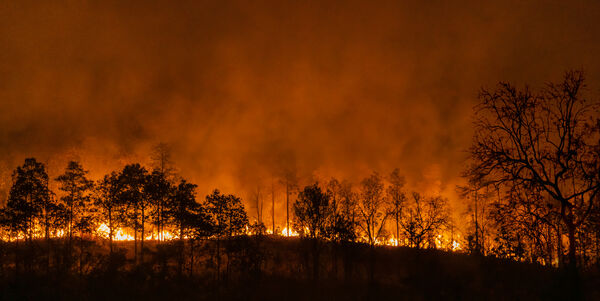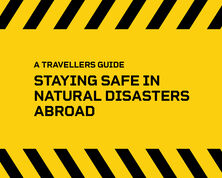
Every year, extreme heat and wildfires threaten people, properties, wildlife and natural landscapes. While this is a global problem, the issue is particularly acute in Australia. Recent above-average temperatures and below-average rainfall make bushfires increasingly likely – elevating fire risks across this vast country.
In the 2023-24 fire season, Australia lost 1,720 kilometres sq of natural forests to fire. Around 167,000 "high confidence" fire alerts were issued, and over 170 homes and buildings were destroyed.
But there are practical steps you can take to understand the risks and stay safe.
In this guide, we'll explore essential safety tips for preparing and responding to bushfires, as well as staying safe in extreme heat while travelling.
The basics
Before delving into bushfire safety, it's important to address the dangers of extreme heat and sun exposure.
When travelling in hot climates (whether in Australia or elsewhere), take the following precautions:
Stay hydrated: Drink plenty of water to stay hydrated, especially when spending time outdoors in high temperatures.
Seek shade: Limit exposure to direct sunlight by seeking shade whenever possible, especially during the hottest parts of the day.
Wear protective clothing: Dress in lightweight, breathable clothing that covers your skin to reduce sun exposure. For added protection, wear a wide-brimmed hat and sunglasses.
Apply sunscreen: Use sunscreen with a high SPF rating to protect exposed skin from harmful UV rays. Reapply sunscreen regularly, especially after swimming or sweating. Be aware of UV levels:
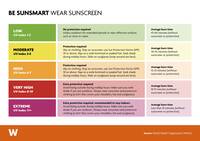
Stay indoors during peak heat: Avoid outdoor activities during the hottest times of the day, typically between 10am and 4pm. Instead, plan indoor activities or sightseeing for these hours.
Limit physical activity: If you're planning hikes, climbs or other physical activities, organise the most strenuous sections for cooler times of day – such as morning or evening.
Keep your space cool: Whether camping or staying in a motorhome, hotel, or apartment, keep your space as cool as possible by closing windows, blinds, and curtains in rooms directly facing the sun. Use air conditioning where possible.
Understand the risks: Hot weather increases the risks of serious conditions like strokes, heart attacks and breathing difficulties, especially in older people and those with underlying health conditions. Research the signs of heat stroke and heat exhaustion before you go.
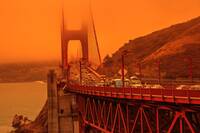
Understanding bushfire risks
Bushfires are a type of wildfire. They spread rapidly through bush vegetation like woodland and scrublands – often found just inland from the Australian coast.
Bushfires are common in Australia, fueled by high temperatures, dry vegetation, and windy conditions. When fires break out, they take hold quickly, so understanding the risks is a crucial first step for staying safe.
Radiant heat: This is heat moving before a fire front, which can be deadly. Radiant heat can break windows and burst car tyres up to 100 metres away from the main fire.
Air quality: Smoke, ash, and toxic fumes can spread many kilometres from the fire itself, impacting air quality and breathing. Wear a mask if possible, but a cloth tied over your nose and mouth will help.
Infrastructure: Severe fires can disrupt the power supply and damage key services like water and gas pipes, sewage, and phone lines. Plan ahead with bottled water and battery packs.
Bushfire safety: what to do before you travel
If you're travelling to a region impacted by bushfires, the first thing to do is research news sources and emergency services.
The best time to prepare for an emergency is before it happens. So, make sure you:
Stay informed: Follow local fire emergency services on social media. Keep emergency contact numbers handy, and stay tuned to local news channels for updates on bushfire activity.
Create a bushfire plan: Create a bushfire plan that includes evacuation routes, emergency contacts, and essential supplies. Most of the time, authorities will guide you or give you the necessary information.
A word on risk levels…
If there's one essential step, it's familiarising yourself with bushfire risk categories and knowing what actions to take based on the severity of the threat.
Take a look at the Australian Fire Danger Rating System (AFDRS), which provides four simple, colour–coded danger ratings ranging from moderate to high, extreme, and catastrophic.
Sorry, this YouTube video cannot be displayed.
The following consent is required:
Tracking & performance, Targeting & advertising.
Here are the recommended actions for each category:
Moderate: Plan and prepare. Stay up to date.
High: Prepare to act. Know what you'll do if a fire starts.
Extreme: Take action now to protect your life and property. Make sure you're in a safe location.
Catastrophic: For your survival, leave bushfire risk areas. Find a safer location as soon as possible.
Responding to an active bushfire
If you're threatened by a bushfire, the first thing to do is remain calm. Decide whether you need to stay or leave, paying close attention to official advice and AFDRS updates.
It's best to decide as early as possible, but if there is any doubt, the safest approach is early evacuation.
Here's what to do, whether you evacuate or "shelter in place".
Evacuation during a bushfire
- Follow local authorities' instructions and be prepared to evacuate early if necessary. Monitor local media (especially news channels and radio) for updates on evacuation orders and act quickly to leave the area.
- Don't hesitate to evacuate if instructed to do so by local authorities. Bushfires are notoriously unpredictable and can worsen or change direction without warning. Delaying evacuation can put you at greater risk as conditions develop.
Know your route
- Have a clear plan for where you'll evacuate (local evacuation centres are usually safest), and avoid driving toward the firefront.
- Getting caught outside or in a vehicle is extremely dangerous during a bushfire. Emergency services may be unable to reach you if the fire hits, so get driving out of the way early.
Shelter in place
- If evacuation from your area isn't possible, seek shelter in a fire-designed building or designated safe area. Follow emergency services' instructions and prepare your surroundings for protection against fire.
- Turn off your gas supply and air conditioning. Clear away debris, leaves and sticks from roofs and exteriors and remove flammable objects such as hanging baskets, fuel, garden furniture and wood piles.
Stay put - Once you've committed to sheltering in place, remain indoors and await further instructions from local authorities.
- Close all doors and windows and use wet towels to fill any gaps. If possible, fill sinks and gutters with water.
- Don't try to leave once the fire arrives, as you'll be at greater risk outdoors or in a vehicle. As a very last resort, if your building catches fire, water (like beaches, dams and rivers) or open ploughed fields provide some protection against the flames.
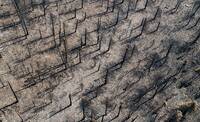
Once you're out of danger
If you've evacuated, only return once the authorities have told you it's safe to do so. If you sheltered in place, stay where you are, watching for renewed fire risk.
As before, try to get updates from local news and official social media accounts whenever possible.
Once you're definitely safe, it's time to:
- Update family and friends: If friends and family knew about your trip, they'll probably hear about bushfires on the news. Let them know you're safe and where you are.
- Contact your travel insurance provider: If you need to make an insurance claim, contact your travel insurer as soon as possible. They'll advise on the next steps.
In Summary
Bushfires and extreme heat are hazards in Australia, but with careful planning, a few basic precautions, and swift action, travellers can minimise risks and stay safe. Remember, your safety should always be your top priority, so stay vigilant and heed warnings from local authorities. We wish you safe travels.
Looking for more safety advice when travelling abroad? Explore our guides to navigating natural disasters, civil disturbances and terror attacks.

Peter Stannett
Content Writer
Peter is our content writer and SEO specialist, helping keep our content current and monitoring website traffic.
His content covers all four corners of the globe, across topics like activities, advice, food, culture and history.
More by Peter StannettRecent Blog Posts
-
Explore the World Your Way
February 13, 2025 -
Guest Post: A Journey through the Parks and Lakes of Western Canada
October 28, 2024 -
Rhythms of the South: Celebrating the Sounds of Southern Soul, Gospel and Funk
October 10, 2024 -
Rhythms of the South: Exploring the Soul of Memphis Blues, Soul and Rock 'n' Roll
October 2, 2024 -
Rhythms of the South: A Journey Through the Jazz and Dixieland Roots of New Orleans
September 24, 2024
